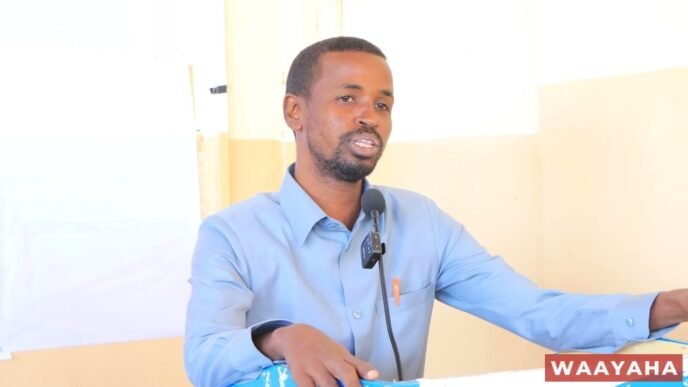In the bustling streets of Mogadishu, the capital of Somalia, the echoes of explosions have become an all too familiar sound. While the city’s resilient residents have grown accustomed to the threat of violence, few truly understand the intricate network behind the bombings that have claimed countless innocent lives.
Through an exclusive investigation, relying on intelligence sources and insider accounts, we unravel the complex web of operatives orchestrating these devastating attacks. At the heart of this network lies a shadowy figure known as Saleebaan Sheekh Cumar Cali Fiidow, the overall commander of the bombing operations.
Fiidow’s right-hand man is a man named Yaxye Axmed Maxamuud, whose nom de guerre is Yaxye Buur. Together, they operate from the Mubarak district in the Middle Juba region, near the town of Awdheegle, establishing a crucial hub for the coordination of bombings in Mogadishu.
Their immediate subordinates, Guuleed and his deputy Salmaan or Haaruun, oversee a base of operations in the Gandarshe area, on the outskirts of the capital city. It is from here that they orchestrate the intricate logistics and planning of the deadly explosions that have rocked Mogadishu.
The network’s tentacles extend deep into the city itself, with various cells tasked with executing the attacks. One such cell was previously led by a man known as Garaad, who was captured and killed while attempting to escape from the central prison. His role was subsequently taken over by an elusive figure with multiple aliases, including Caano Geel, Carab, and Jeeri.
Intelligence sources have provided chilling details about Jeeri’s involvement, including his alleged role in the devastating bombings at the Liido beach and the Geleedh compound, as well as the attack on the Banadir Regional Administration Headquarters. Despite being on the run and narrowly evading capture, his family members were apprehended by the National Intelligence and Security Agency (NISA), providing a potential lead for authorities.
The network’s operations extend beyond the execution of bombings, with a sophisticated logistics and support system in place. Individuals like Duraan and Cabdirashiid were arrested while attempting to distribute funds to the Ministry of Finance, highlighting the group’s efforts to infiltrate government institutions.
Another key player is Mawlid Cali Cabdulle, whose role was to plant explosives in vehicles entering Mogadishu. Xaaji, on the other hand, was responsible for procuring and preparing the explosive materials used in the attacks.
The investigation has also identified individuals like Cabdullaahi Axmed Xassan, Cabdifataax Maxamed Nuur, and Zakariye Cabdullaahi Yuusuf as collaborators within this vast network, illustrating the depth and complexity of the operation.
While NISA has made significant strides in dismantling this bombing network, the battle against extremism is far from over. Each arrest and disruption serves as a reminder of the ongoing threat posed by these groups and the urgent need for continued vigilance and international cooperation.
As Mogadishu continues to rebuild and heal from the scars of violence, the unmasking of this intricate network offers a glimmer of hope – a testament to the resilience of the Somali people and their unwavering determination to reclaim their streets from the forces of terror.













